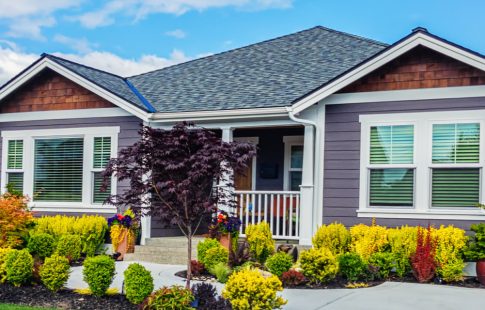Estimated reading time: 5 minutes
Many Americans see down payments as the biggest obstacle to buying a home. But thankfully, there may be several options to choose from when it comes to setting yours. Understanding what a down payment is and how much a down payment should be are among the first steps toward homeownership. Here’s an overview.
Down payments, explained
A down payment on a house is the cash you pay toward its purchase price at closing. It’s typically paid out of your pocket but can also be paid with the help of others, if your lender and loan type allow (see below).
These payments are usually expressed as a percentage of a home’s total sale price, such as 3% or 20% down. When they’re added to the amount of your initial mortgage loan, they add up to a home’s the total purchase price. Example: You put a $10,000 down on a house and have a remaining balance of $290,000. The total sales price equals $300,000. $10,000 + $290,000 = $300,000.
Your final down payment will depend on the cost of the house you buy, the percentage of that price you are able to pay upfront, and your lender’s requirements. That final amount will also help determine how much equity you have in a house, which is another way of saying how much of a house you own.
How much to put down on a house
Many homebuyers think they need to make a 20% down payment, but most pay much less. That’s because buyers can put down as little as 0% depending on their loan type. Speaking to this point, a National Association of REALTORS® study reported that in 2019:
- First-time homebuyers paid a median of 6% down.
- Repeat buyers paid a median of 16% down.
- And among all buyers, the median was 12% down.
Keep in mind that there may be a trade-offs if you go with a low down payment on a house, like a higher mortgage rate, Private Mortgage Insurance (PMI) for less than 20% down payment on Conventional loans, or monthly mortgage insurance for FHA loans. Another cost that must typically be paid upfront is closing costs, which can be 0-5% of the purchase price in addition to your down payment. Closing costs can often be rolled in with a loan while some loan options have no closing costs at all. A Mortgage Professional can help you figure out ways to keep things as affordable as possible.
Advantages of a 20% down payment on a house
That said, while it might seem steep, a 20% down payment (or more) could work to your advantage. It can help you:
- Better your odds of getting a mortgage at a low interest rate: A 20% down payment generally increases the likelihood you’ll qualify for a cheaper mortgage rate. Your loan will present less risk to a lender because you’ll have more of your money in the house instead of theirs.
- Reduce your monthly payment: If you put 20% down, you’ll have a smaller mortgage amount than you would otherwise, which means you’ll have a lower monthly payment. To crunch the numbers, try our mortgage calculator to see how a 20% down payment could reduce your monthly bill.
- Avoid mortgage insurance (PMI or MIP): Lenders typically require borrowers to pay mortgage insurance if they don’t make a 20% down payment. Lenders tack insurance’s cost onto monthly mortgage payments, which results in higher monthly payments. FHA loans also require borrowers to pay a separate mortgage insurance fee upfront.
- Pay less interest over time: Each mortgage payment is a combination of your principal (the amount borrowed) and interest. As time passes and the mortgage matures, the principal portion of your payment will increase, and the interest portion will decrease. You can use an amortization calculator to see how much of your payment will go to your loan’s principal versus interest over time.
Creative ways to save for a down payment
With a little planning and focus, saving for a down payment doesn’t have to be hard. Here are some ways to save:
- Create a budget: Creating and sticking a budget to itis becoming easier than ever thanks to websites, apps, and bank programs that can help. Check out our blog on starting a budget for more tips.
- Optimize your bills and subscriptions: Consider cancelling any bills or services that aren’t truly essential. This includes cable and internet streaming services, video games, house cleaning, lawn services, etc.
- Pick up a side hustle: Every penny you make from picking up a side job can go directly into your down payment fund.
- Sell your stuff: Consider selling things that you don’t use and put that money toward the down payment on a house.
- Create a down payment savings account: Keeping this account separate from your checking or savings accounts will ensure that your money doesn’t end up getting spent on everyday expenses.
Types of down payment assistance that are available
A number of down payment assistance programs are available to help homebuyers. A local HUD-approved housing counselor can tell you more. Depending on your loan type, a home seller may also be allowed to contribute to your down payment. The same goes for family or friends. Note that the final amount they’ll be able to contribute will depend on your lender, loan type, and qualifications.
Ready to move up with the right down payment? Get in touch with one of our Mortgage Professionals to learn how we can help.







